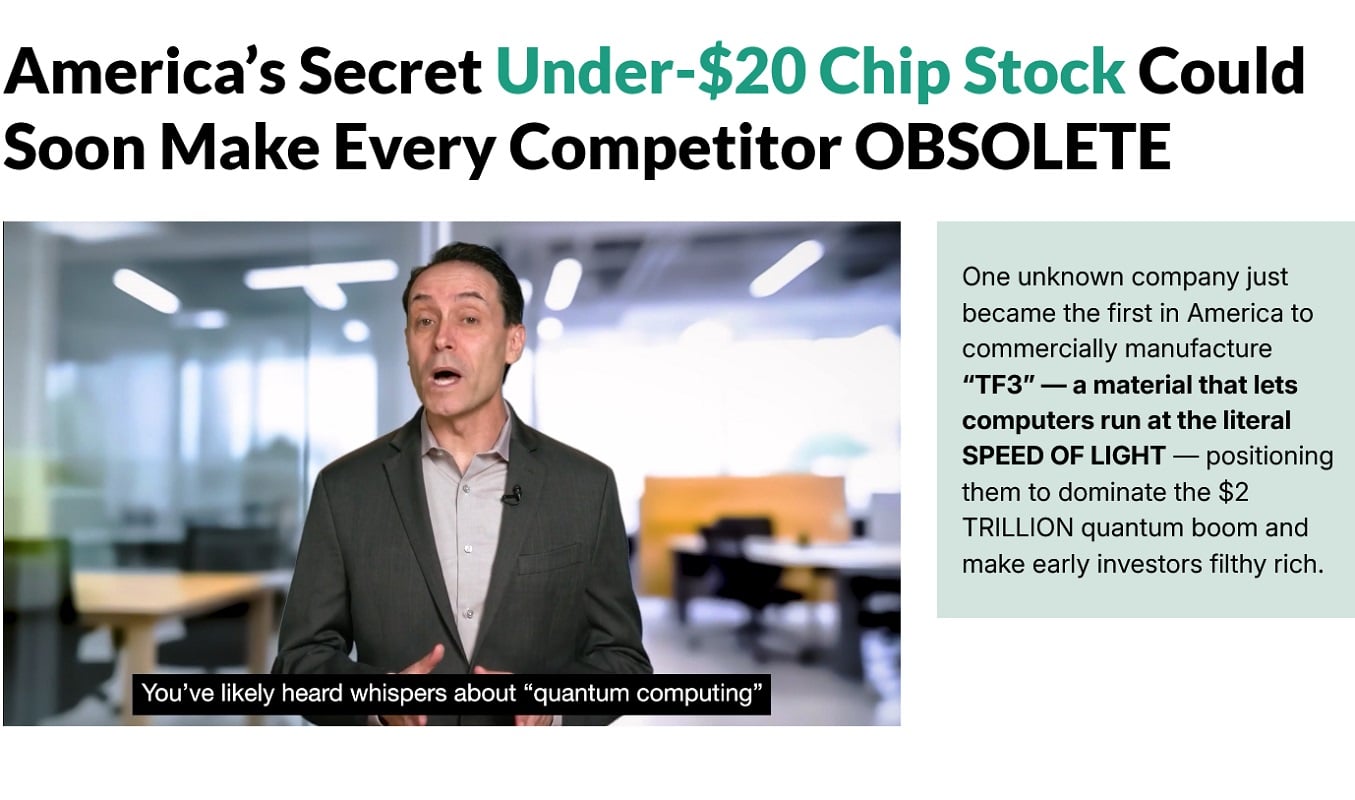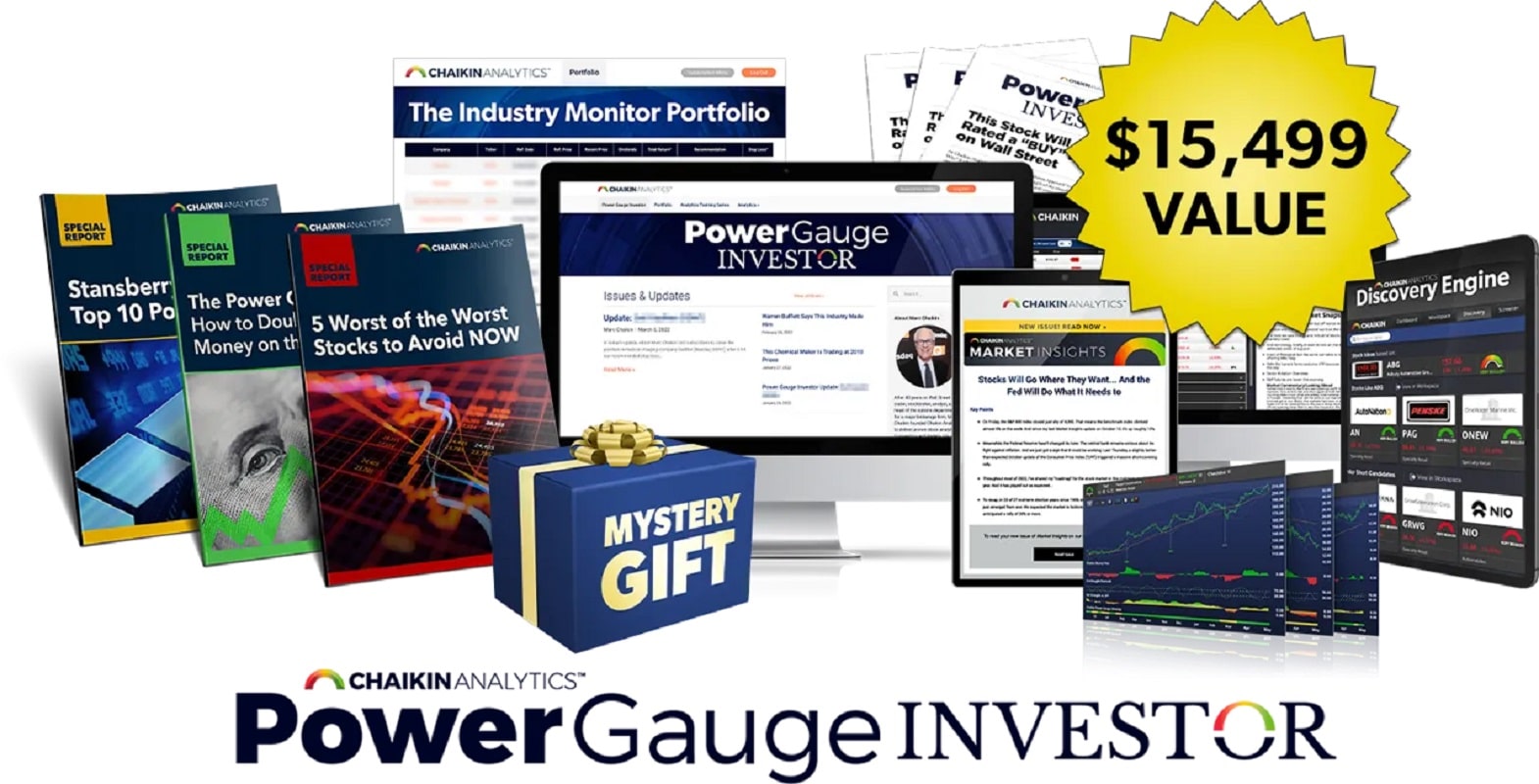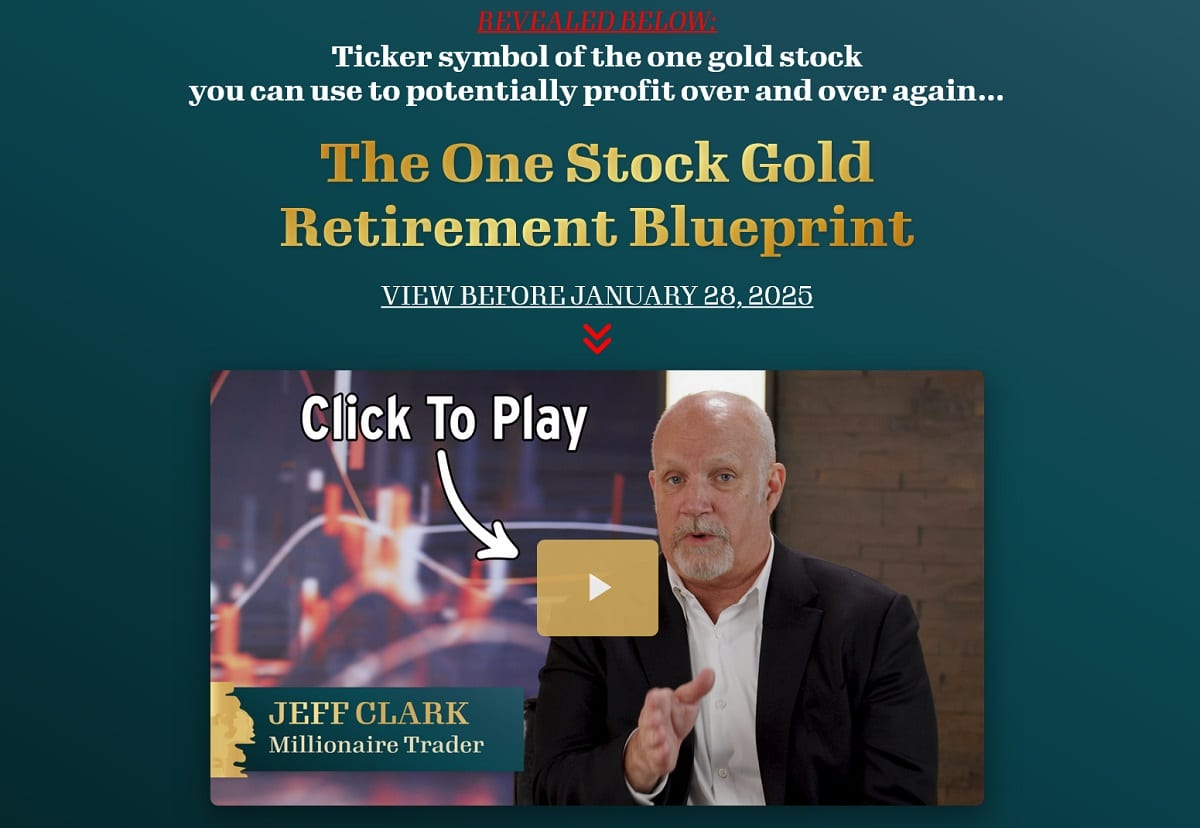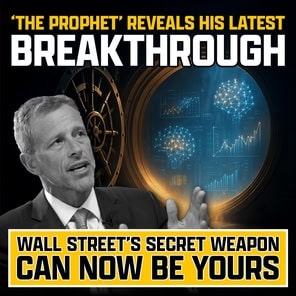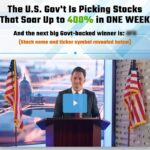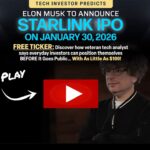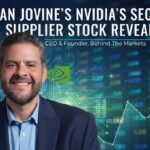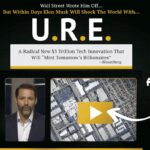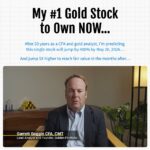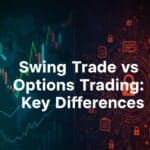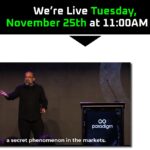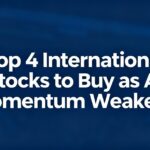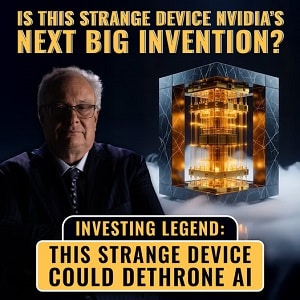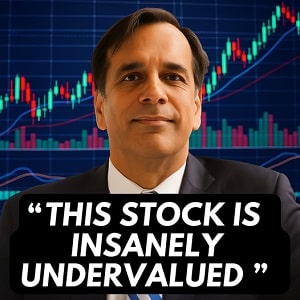In the rapidly evolving world of technology, few breakthroughs have generated as much buzz as quantum computing. Imagine computers that operate at speeds billions of times faster than today’s supercomputers, solving problems that would otherwise take millennia. This isn’t science fiction—it’s the promise of quantum technologies, and at the heart of this revolution is a material Marc Lichtenfeld calls “TF3.”
As the Chief Income Strategist at The Oxford Club, Lichtenfeld has built a reputation for spotting lucrative investment opportunities, particularly in dividend stocks. But in a recent presentation, he breaks from his usual focus on steady income to highlight what he believes is the investment opportunity of a lifetime: a little-known American company that’s the sole supplier of TF3 chips in the United States.
Lichtenfeld’s presentation paints a vivid picture of TF3, short for Thin Film Lithium Niobate, a man-made crystal material engineered to harness and direct particles of light for unprecedented computing power.
He claims this technology could unlock trillions in value, outpacing even the AI boom or the internet revolution. But with bold claims come questions: Is the TF3 chip supplier legit? Is this a genuine ground-floor opportunity, or just hype?
In this in-depth analysis, we’ll dissect Lichtenfeld’s revelations, exploring the science, the company, the market potential, and the risks. By the end, you’ll have a clear understanding of whether this could be the next big thing in quantum computing investments.
What Is the TF3 Chip Revolution?
Quantum computing has been whispered about in tech circles for years, but Lichtenfeld argues it’s now on the cusp of mainstream explosion.
The World Economic Forum highlights its potential to accelerate drug discovery, while firms like Goldman Sachs are developing quantum trading systems. Even the U.S. government is upgrading infrastructure to defend against quantum attacks.
McKinsey estimates quantum technologies could generate up to $2 trillion in value across four industries by 2035—or sooner. Lichtenfeld zeros in on photonic quantum computing, which uses light particles instead of electricity, promising efficiency gains that could slash energy use by 99% and run 10 million times more efficiently than traditional systems, according to MIT and Cambridge Consultants.
At the center of this is TF3, produced in a cutting-edge facility in Tempe, Arizona. Lichtenfeld dubs it “pure science fiction” because it manipulates individual photons to achieve computing speeds at the speed of light—186,000 miles per second.
This isn’t just faster; it’s cooler, more efficient, and poised to solve the “50-year computing problem” of heat, bottlenecks, and physical limits in silicon chips. As data centers gobble up 2% of global electricity (projected to triple by 2030), TF3 could be the game-changer, especially with AI demands skyrocketing.
Who Is Marc Lichtenfeld? A Trusted Voice in Investing

Before diving into TF3, it’s essential to understand the messenger. Marc Lichtenfeld positions himself as the “Income Guy” at The Oxford Club, with over 20 years of experience helping investors build reliable income streams through dividend stocks and bonds. His approach emphasizes rock-solid finances and steady payouts, leading to two best-selling books. “Get Rich with Dividends,” his most popular, won the 2016 Book of the Year award from the Institute for Financial Literacy.
Readers rave about his strategies: Burt, a 69-year-old retired engineer from Canada, calls it a “great success” for generating retirement income. Edward, a 55-year-old retired firefighter from Florida, says it’s “life-changing.” Bryan from Texas appreciates how it helps him “sleep better at night” with a long-term wealth strategy.
Lichtenfeld’s track record isn’t just anecdotal. His subscribers have built portfolios that weather market storms, focusing on compound growth rather than risky bets.
However, he admits that rare opportunities demand attention, like the shift to electric vehicles that turned early Tesla investors into millionaires (with shares rising 20,000% from 2012 to 2022). He sees TF3 as such a seismic shift, bigger than the internet or AI, solving core computing crises. This deviation from his “rules” underscores his conviction: TF3 isn’t a dividend play but a potential explosive gainer.
Skeptics might question why an income expert is hyping a speculative tech stock. Lichtenfeld addresses this by emphasizing validation from elite organizations and real revenue streams.
His letter isn’t a casual tip; it’s backed by months of research, financial analysis, and market projections. He offers a special report, “The TF3 Revolution: The Trillion-Dollar Breakthrough and the Hidden Company That Controls It All,” as part of a subscription to The Oxford Income Letter.
Understanding TF3: The Material Powering Lightspeed Computing
TF3, or Thin Film Lithium Niobate, is the star of Lichtenfeld’s narrative. Derived from lithium (the third element on the periodic table), it’s a precision-engineered crystal that controls light particles in spaces 10,000 times thinner than a human hair. Unlike traditional silicon chips that rely on electricity—prone to heat, bottlenecks, and atomic-scale limits—TF3 uses photons for data transmission. This photonic approach enables quantum computers to operate at light speed, with minimal heat and energy consumption.
Lichtenfeld traces the breakthrough to 2019 when Google achieved “quantum supremacy,” solving a problem in 200 seconds that would take supercomputers 10,000 years—a billion times faster. But China one-upped them with a photonic quantum computer using light particles, solving a harder problem in the same time frame, which would take supercomputers over half a billion years. That’s 79 trillion times faster than the best traditional systems and 50,000 times Google’s feat. This confirmed light-based quantum computing’s superiority, running cooler and more efficiently.
The implications are staggering. MIT reports light-based systems could be 10 million times more efficient, while Cambridge Consultants note 99% energy savings. Data centers, now spending 40% on cooling, could become obsolete dinosaurs. AI, which consumes 10 times more power than a Google search, exacerbates the crisis—Microsoft’s emissions rose 29% since 2020 due to AI, and Goldman Sachs predicts $720 billion in grid upgrades by 2030. TF3 solves the “heat problem,” “traffic jam effect,” and physics barriers, allowing computers to run on watch-battery power without overheating.
But TF3’s real edge is in quantum applications. It enables practical photonic quantum computers, not hoarded by giants like Google, Microsoft, or NVIDIA. Instead, one small U.S. company has cornered domestic production, opening a foundry in Tempe, Arizona, on May 12, 2025. This positions America for technological independence amid reliance on Taiwan for 90% of advanced chips. The CHIPS Act’s $280 billion focuses on silicon, but TF3 targets the future.
Producing TF3 is no easy feat—requiring atomic precision and millions in equipment. Most firms buy from overseas, creating vulnerabilities.
Lichtenfeld’s company saw the blind spot: control the essential material, like Cisco did with internet networking gear. While dot-coms busted, Cisco profited from every online transaction. Similarly, this firm invested in scientists, licenses, and manufacturing to become the U.S.’s only commercial TF3 foundry for quantum chips.
The Hidden Company: America’s TF3 Monopoly
Lichtenfeld reveals a company trading under $20 per share, with potential to hit $300—a massive upside. It’s the only U.S. firm dedicated to TF3 quantum chips, generating revenue from proven systems for elite clients. A major aerospace contractor ordered in December 2024, followed by a Canadian quantum firm (which reordered three months later). NASA awarded multiple contracts for space data processing, handling calculations in minutes that take supercomputers years.
Medical validations include a January 2025 partnership with the Sanders Tri-Institutional Therapeutics Discovery Institute (Memorial Sloan Kettering, Rockefeller University, Weill Cornell Medicine). They’re using quantum for drug discovery, simulating interactions to cut 10-15-year development cycles and billions in costs. This could personalize medicine, predicting treatments accurately.
In automotive, the company dominated BMW and Amazon’s Quantum Computing Challenge, solving vehicle sensor placement in six minutes—processing 3,800 variables versus traditional computers’ 127. This “impossible” feat stunned engineers, proving quantum’s real-world edge for self-driving tech.
Financially, the company is robust: cash surged from $2 million to $79 million in 12 months, plus $94 million raised in Q1 2025, totaling $166 million. Assets doubled from $74 million (Dec 2023) to $243 million (March 2025). Projections: a six-inch TF3 wafer generates $3 million; full foundry capacity yields $180 million annually. The photonic chip market could hit $97 billion by 2035; capturing 25% means $24 billion revenue, $2.4 billion profits at 10% margins, valuing the firm at $46 billion—or $300 per share with 155 million shares.
Barriers deter competitors: atomic precision takes years, even for giants. Google and Intel focus on core businesses, preferring to buy TF3. This creates a “perfect monopoly,” with global demand from Asia, Canada, and the U.S.
Why NVIDIA Should Be Worried: A Threat to the Status Quo
NVIDIA, with 95% AI chip market share and $4 trillion valuation, dismissed quantum in January 2025, crashing stocks 40%. But CEO Jensen Huang later admitted he was wrong at a “Quantum Day” event, launching platforms and hiring engineers.
Lichtenfeld sees this as fear: TF3’s 99% energy reduction attacks NVIDIA’s power-hungry GPUs. Historical parallels include Bill Gates downplaying the internet or BlackBerry ignoring smartphones.
TF3 positions the company as David to NVIDIA’s Goliath, especially as AI strains grids. With quantum projected at $2 trillion (automotive, chemicals, finance, life sciences), plus untapped defense, energy, and telecom, the upside is immense. McKinsey’s estimate is conservative, ignoring broader applications like unbreakable encryption or fusion optimization.
Is the TF3 Chip Supplier Legit? Weighing the Evidence
The TF3 supplier appears legit, backed by real achievements. Elite validations from NASA, top medical institutions, and BMW aren’t hype—they’re proven contracts solving complex problems. Revenue from TF3 wafers and quantum systems is flowing, with repeat orders signaling demand. The Tempe foundry’s opening marks a milestone, securing U.S. independence.
However, risks exist: investing involves no guarantees, and Lichtenfeld urges not risking more than you can lose. Quantum is nascent; mainstream adoption could take time. Competition might emerge, though barriers are high. The stock’s under-$20 price reflects obscurity, but Wall Street discovery could spike it—or volatility could ensue.
Lichtenfeld’s promotional nature raises bias questions, but his guarantee—full refund within 365 days, keep reports—mitigates this. The Oxford Income Letter ($59/year, 76% off $249) includes five portfolios, reports like “The Double-Digit AI Income Play” (9.2% yield), “The Elon Musk 100X Moonshot,” and “#1 Oil and Gas Royalty.” Plus, a free “Get Rich with Dividends” book.
Catalysts include production scaling, new contracts, and analyst coverage. Timing is key: the 12-18-month window is closing, with factory operational since May 2025.
Market Projections and Broader Implications
McKinsey’s $2 trillion by 2035 spans four industries, but Lichtenfeld argues it’s understated. Automotive: optimizing self-driving sensors. Chemicals: precise simulations. Finance: quantum trading. Life sciences: accelerated drugs. Defense could add billions via Pentagon spending; energy, grid optimization; telecom, secure networks.
TF3 is essential—no lightspeed quantum without it, like smartphones without semiconductors. The company’s monopoly ensures pricing power, with global shipments already underway.
Conclusion: Seize the TF3 Opportunity?
Lichtenfeld’s TF3 revelation is compelling: a legit supplier with proven tech, elite clients, and explosive potential. From under $20 to $300, it’s a moonshot grounded in real breakthroughs. Whether it dwarfs NVIDIA or reshapes computing, the evidence suggests legitimacy. Subscribe to The Oxford Income Letter for the full report and strategies blending growth with income. Don’t miss the window—act now for potential life-changing returns.
FAQ: Marc Lichtenfeld’s TF3 Chip Supplier and Quantum Computing Breakthrough
What is the TF3 chip, and why is it important?
TF3, or Thin Film Lithium Niobate, is a man-made crystal material that manipulates light particles (photons) to enable photonic quantum computing. Unlike traditional silicon chips that use electricity, TF3 operates at the speed of light (186,000 miles per second), offering 10 million times greater efficiency and 99% less energy use, according to MIT and Cambridge Consultants. It solves critical computing issues like heat, bottlenecks, and physical limits, making it essential for next-generation quantum computers that could unlock a $2 trillion market by 2035, per McKinsey’s projections.
Who is Marc Lichtenfeld, and why should I trust his claims?
Marc Lichtenfeld is the Chief Income Strategist at The Oxford Club, with over 20 years of experience helping investors build wealth through dividend stocks and bonds. His book, Get Rich with Dividends, won the 2016 Book of the Year from the Institute for Financial Literacy. Readers like Burt, Edward, and Bryan praise his strategies for generating reliable income and transforming their financial futures. While his focus is typically income, Lichtenfeld’s research into TF3 is backed by months of analysis, and he offers a 365-day refund guarantee, enhancing his credibility.
What makes the TF3 supplier company unique?
The company is the only U.S. commercial foundry dedicated to producing TF3-based chips for quantum computing, giving it a monopoly-like position. Opened in Tempe, Arizona, on May 12, 2025, the foundry serves elite clients like NASA, top medical institutions, and a Canadian quantum firm. It has secured contracts, generated revenue, and holds $166 million in cash, with assets doubling to $243 million by March 2025. Its focus on TF3 production, rather than competing in quantum computer design, mirrors Cisco’s strategy during the internet boom.
Is the TF3 chip supplier legitimate, or is this just hype?
The supplier appears legitimate based on validated achievements: NASA contracts for space data processing, a partnership with Sanders Tri-Institutional Therapeutics Discovery Institute for drug discovery, and dominating BMW’s Quantum Computing Challenge. It’s generating revenue from TF3 wafers and quantum systems, with repeat orders signaling demand. However, investing carries risks, and mainstream quantum adoption is not guaranteed. Lichtenfeld’s 365-day refund policy and retention of reports even if you cancel mitigate promotional bias concerns.
How does TF3 compare to traditional computing and other quantum technologies?
Traditional silicon chips use electricity, creating heat, bottlenecks, and hitting physical limits as transistors near atomic size. Google’s 2019 quantum computer, using superconducting materials, was 1 billion times faster than supercomputers. China’s photonic quantum computer, using light, was 79 trillion times faster, solving problems in 200 seconds that would take supercomputers half a billion years. TF3 enables this light-based approach, running cooler and more efficiently, potentially revolutionizing computing by slashing energy use and enabling lightspeed performance.
What are the potential returns from investing in the TF3 supplier?
Lichtenfeld projects the stock, currently under $20, could reach $300 in the coming years. The photonic chip market could hit $97 billion by 2035. Capturing 25% of this market could yield $24 billion in revenue, with $2.4 billion in profits at a 10% margin. With a price-to-earnings ratio of 19, the company could be worth $46 billion, or $300 per share with 155 million shares outstanding. Additional revenue from quantum systems, licensing, and government contracts could push returns higher, though risks remain.
Why is now the right time to invest in the TF3 supplier?
The company’s Tempe foundry is operational, serving elite clients like NASA and generating revenue. Lichtenfeld estimates a 12-18-month window for ground-floor opportunities, with 6-9 months already elapsed since the May 2025 opening. As Wall Street and institutional investors discover the stock, the under-$20 price could vanish. Catalysts like production milestones, new contracts, and analyst coverage could drive 100-200% gains or more, making early action critical.
What industries will benefit from TF3 and quantum computing?
McKinsey projects $2 trillion in value by 2035 across automotive (self-driving sensors), chemicals (precise simulations), financial services (quantum trading), and life sciences (drug discovery). Untapped sectors include defense (Pentagon spending), energy (grid optimization, fusion power), and telecommunications (quantum encryption). The TF3 supplier’s monopoly positions it to capture significant market share as these industries adopt quantum solutions.
How does the TF3 supplier threaten companies like NVIDIA?
NVIDIA, with 95% of the AI chip market, relies on power-hungry GPUs that require costly cooling. TF3’s 99% energy reduction directly challenges this weakness. After dismissing quantum computing in January 2025, NVIDIA’s CEO Jensen Huang backtracked, launching quantum platforms and hiring engineers, signaling concern. TF3’s efficiency could disrupt NVIDIA’s dominance as AI and data center demands strain power grids, projected to need $720 billion in upgrades by 2030.
What are the risks of investing in the TF3 supplier?
Investing is never guaranteed, and Lichtenfeld advises not risking more than you can afford to lose. Quantum computing is in its early stages, and mainstream adoption may take years. Competitors could eventually develop TF3 production, though high barriers (atomic precision, costly equipment) make this unlikely soon. The stock’s low price reflects obscurity, but volatility could spike with Wall Street attention. Thorough research and risk management are essential.
What do I get with The Oxford Income Letter subscription?
For $59 (76% off $249), you receive:
- 12 monthly issues with actionable research.
- The report, The TF3 Revolution: The Trillion-Dollar Breakthrough and the Hidden Company That Controls It All, with the company’s name, ticker, and price targets.
- Additional reports: The Double-Digit AI Income Play (9.2% yield), The Elon Musk 100X Moonshot, and The #1 Oil and Gas Royalty.
- Five model portfolios, including the Strategic Growth Portfolio with TF3.
- Weekly updates, market insights, and VIP support.
- A free copy of Get Rich with Dividends.
- A 365-day refund guarantee, keeping all reports even if you cancel.
How does TF3 contribute to America’s technological independence?
Taiwan produces 90% of advanced chips, creating vulnerabilities for U.S. tech giants like Apple, Google, and NVIDIA. The CHIPS Act’s $280 billion targets silicon, but TF3 focuses on future quantum tech. The supplier’s Tempe foundry, the only U.S. commercial TF3 producer, ensures domestic supply, aligning with Pentagon, Congress, and White House goals for technological self-reliance.
How does the TF3 supplier compare to historical tech successes?
Lichtenfeld likens the company to Cisco during the internet boom. While dot-coms failed, Cisco profited by supplying essential networking gear. Similarly, the TF3 supplier focuses on the critical material for quantum computing, not competing with giants building quantum systems. This strategic focus, like owning silicon during the computer revolution, positions it for outsized gains as demand grows.
What validations support the TF3 supplier’s technology?
The company has contracts with NASA for space data processing, a partnership with Sanders Tri-Institutional Therapeutics Discovery Institute for drug discovery, and won BMW’s Quantum Computing Challenge by solving sensor placement in six minutes. Repeat orders from a Canadian quantum firm and interest from aerospace and Asian clients confirm real-world demand and technological prowess.
How do I get started with this investment opportunity?
Subscribe to The Oxford Income Letter for $59 by clicking here. You’ll receive the TF3 Revolution report with the company’s name, ticker, and investment roadmap. Follow Lichtenfeld’s step-by-step instructions to buy the stock. No minimum investment is required, but act quickly, as the under-$20 price may not last as awareness grows.

